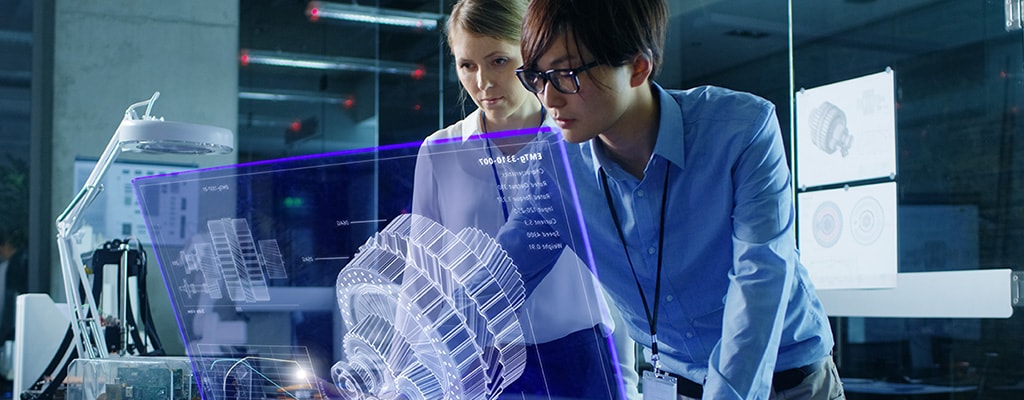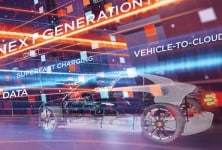
Executive Insights
Decarbonizing Commercial Fleets with Electrification
Author: Steven Merkt, President, Transportation Solutions
Last June, the State of California passed sweeping regulations on the electrification of commercial trucks. The California Air Resource Board (CARB)’s “Advanced Clean Trucks” rule requires the number of new zero-emission electric trucks sold in the state to increase every year from 2024 until 2045, when all new trucks must be carbon neutral.
Elsewhere in the world, regulatory advances continue to drive progress in electrification of commercial fleets: in China, commercial vehicles now account for approximately 70% of all new energy consumed in the electric automotive sector, and in Europe, the European Commission recently established an objective to have 80,00 zero-emissions trucks on the road by 2030.
While these regulations and objectives are among the first formal legislative pushes for electric trucks in the world, what’s remarkable about them is that they lag behind the private sector.
Focused on the next generation of mobility, OEMs are considering how to make batteries more efficient and robust and determining if hydrogen solutions are a potential technology for their unique freight needs.
With industry heavyweights like Amazon, FedEx, Ford Europe, General Motors BrightDrop and Japan’s Hino Motors heavily investing in commercial electrification – with an eye toward major payoffs down the line – we are seeing quite a different approach than the passenger vehicle sector took a couple of decades ago.
We expect commercial electrification to advance rapidly in the coming years, and I believe we’re at an inflection point where private-sector innovation will play a large role in driving a cleaner and greener future for commercial vehicles.
With this change, we see enormous opportunity. Because of TE’s early investment in electrification, we are poised to reap the benefits of the rapidly electrifying commercial segment. Why? Our connectivity technology is designed for ultra-harsh industrial applications like mining and construction.
This high-grade tech translates well to commercial vehicles, including buses, trucks, and delivery vans, so customers can be confident it will exceed their needs for the wear and tear of day-to-day commercial use and limit repairs and replacements, a major long-term cost-saving incentive of going electric.

Fueling Optimism without Fuel
Rapid urbanization and e-commerce are continuing to drive demand for commercial vehicles worldwide: from buses and garbage trucks to last-mile delivery vans and long-haul cargo vehicles. All of this is being catalyzed by consumers, who are demanding greener ways to buy – from production through delivery. By 2027, industry researchers expect the last-mile delivery market alone to reach $287.22 billion USD with a CAGR of 5 percent over that same period.
This vast potential scale of commercial electric vehicles presents both a challenge and an opportunity. Widescale adoption of electric vehicles can put a real dent in global carbon emissions. But despite progress and optimism, a large portion of that global fleet (98 percent in the EU, for example) continues to run on traditional fuel, and there remains much work to be done.
At the same time, commercial vehicle manufacturers need to enable high-speed, low-latency connectivity – with the structural integrity required to operate in particularly harsh environments – well in advance of the commercial market moving toward fully electric vehicles.
The solution is two-fold, and change will be driven by a combination of electric and hydrogen approaches. Certainly, batteries are a viable solution when it comes to electrifying mid-sized commercial vehicles, like delivery vans. But for larger, heavier freights, there are payload issues inherent with battery-powered propulsion. Hydrogen solutions, which function as a replacement for diesel and gasoline, provide a bridge to this better future and are a huge addressable opportunity for commercial vehicle manufacturers.
With advanced connective solutions for applications ranging from charging inlets, to engine and battery solutions, to other auxiliary functions, TE Connectivity is well-positioned to partner with our customers to co-create complementary technologies for either an electric or a hydrogen future – or both.
Next-Gen Mobility on the Leading-Edge of Legislation
Manufacturers of commercial vehicles are clearly beginning to see regulation as an opportunity and competitive advantage, rather than just a mandate, and are converting their fleets well in advance of policy measures.
We see that manufacturers are in varying stages of this zero-emissions journey. Focused on the next generation of mobility, OEMs are considering how to make batteries more efficient and robust and determining if hydrogen solutions are a potential technology for their unique freight needs.
With so many solutions on the market and variables in play, OEMs require a partner who understands their business and unique challenges and who can strategically work with them to create custom solutions.
TE has been deeply involved in low-carbon solutions for commercial vehicles for more than a decade, well ahead of the market – as a result, we have the industry’s deepest high-voltage portfolio. We work closely with customers to help them understand how they can build a long-term strategy for their entire fleet with connectivity, electric, and hydrogen solutions at the core.
We believe a better future is possible and that low-carbon solutions for commercial vehicles are critical. It’s a future that’s arriving quickly and one in which we’re excited to play a role.
If you are an investor interested in more information about TE Connectivity, please email our Investor Relations team.
About the Author

Steven Merkt
Steven Merkt is president of the Transportation Solutions segment for TE Connectivity. In this role, he is responsible for all aspects of sales, development and operations for the segment, which includes the following business units: Automotive, Industrial & Commercial Transportation, Sensors, and Application Tooling. Steven has been with TE for more than 30 years and previously served as president of TE’s automotive business. He has also held leadership positions in general management, operations, engineering, marketing, supply chain and new product launches.
Executive Insights: More Stories in this Series
 e
e

 e
e



